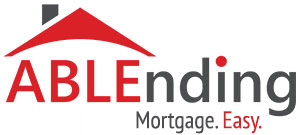The Basics of Mortgage
Let’s face it, not everyone has enough money on his bank account to buy a house. If you are an average American, chances are you need a mortgage loan.
There are many types of mortgages and these can be classified into 2 categories. These are conventional and governmental loans. Mortgages from both categories can be further categorized as fixed rate loans, adjustable rate loans and different hybrids or combinations from these mortgage loans.
The US government provides mortgages which can be found from three government departments. These are the US Department of Veterans Affairs (VA), US Department of Housing and Urban Development (HUD) and The Rural Housing Service (RHS) of the U.S. Dept. of Agriculture. Aside from these, other mortgage plans for low cost to moderate housing plans are also available in different cities, states and counties. Most of these provide fixed rate mortgages and low interest rates.
Mortgage plans that are not included among these are under conventional mortgages. There are 2 kinds of mortgage under this category. These are conforming mortgage loans and non-conforming mortgage loans. Conforming mortgage loans follow the guidelines and conditions that were set up by 2 stock-holder owned corporations: Fannie Mae and Freddie Mac. These two companies purchase mortgage loans from lending institutions and package these into securities that are then sold to investors.
Both organizations set guidelines on down payments, suitable properties, loan amounts, borrower credit and income requirements on mortgages. And every year, loan limits for persons applying for their first mortgage are made known. To see their tables for loan limits, interest rates, and other information, visit the Fannie Mae (www.fanniemae.com) and Freddie Mac(www.freddiemac.com) websites.
There are also other mortgage loans available in the market. These non-conforming loans include: Jumbo loans and B/C loans. Jumbo mortgage loans are those that are above the maximum loan established by Freddie Mac and Fannie Mae. It is a kind of mortgage that has a higher interest than conforming loans because loans are acquired and bought in lower degree.
B/C mortgage loans, on the other hand, refer to plans that are offered to persons who have borrowed mortgage loans earlier but have filed for foreclosure and bankruptcy. This is also for borrowers who have had a record of late payments.
As mentioned earlier, conventional and governmental mortgages can be classified into fixed rate mortgage and adjustable mortgage. From the term “fixed rate”, fixed rate mortgage loans are those whose monthly payments remain fixed over the period of the loan. There are so many kinds of these ranging from 10 – 30 years but the more popular terms for mortgage are 15 and 30. You should note that a shorter mortgage period assures you a smaller interest to pay.
If you want to avail of mortgage loans where monthly payments can change periodically, then you could choose a plan under adjustable rate mortgages. The interest in this type of mortgage loan changes depending on the type of index made to the interest rate. Some of these indexes include Constant Maturity Treasury (CMT), Prime Rate, Certificate of Deposit Index (CODI) , 12-Month Treasury Average (MTA), Cost of Savings Index (COSI), Certificates of Deposit (CD) Indexes, Treasury Bill (T-Bill), 11th District Cost of Funds Index (COFI), London Inter Bank Offering Rates (LIBOR) and Fannie Mae’s Required Net Yield (RNY)
The Internet is a rich source for information on mortgage and so many companies offer online resources and services for those who want to avail of these loans. But before choosing the right type of mortgage there are some considerations you have to think about such that your mortgage plans will work out with your financial objectives. These are:
-The amount you can pay monthly for the mortgage
-How much you can pay for down payment
-How long you plan staying on the house
-Consider if you plan to make extra principal payments
-And since mortgages take over long periods of time to cover, it is also important that you consider the stability of your income.

Leave A Comment